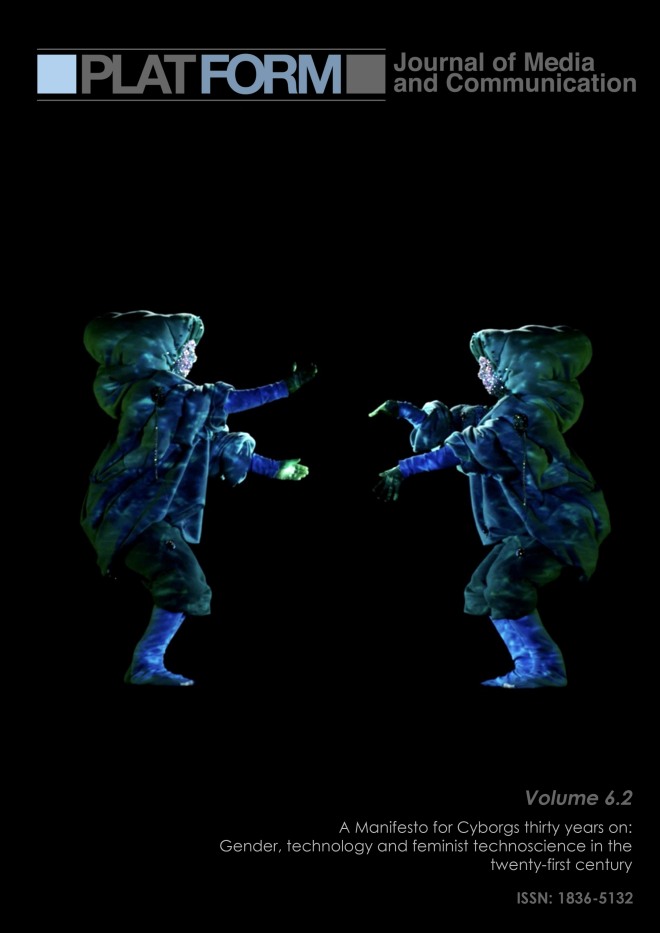Volume Editor: Christopher O’Neill
Abstract submissions due: 19th of March, 2016
Full paper submissions due: 20th of May, 2016
Please send all enquiries and submissions to platformjmc@gmail.com. Abstracts must be accompanied by a brief curriculum vitae and biographical note, and should not exceed 350 words. Abstracts are to be submitted no later than 19th of March, 2016. Full papers will be due by 20th of May 2016; please be aware that acceptance of abstracts does not guarantee publication. All submissions should be from early career researchers (defined as being within a few years of completing their PhD.) or current graduate students undertaking their Masters, PhD. or international equivalent.
All eligible submissions will be sent for double-blind peer-review. Early submission is highly encouraged as the review process will commence on submission.
Note: Please read the submission guidelines before submitting work. Submissions received not in house style will not be accepted and authors will be asked to resubmit their work with the correct formatting before it is sent for review.
Everyone is on the side of the cunning. Media, communications, and cultural studies scholars have increasingly come to identify resistance with the alacrity of Michel de Certeau’s walker, with the trickster whose clever ‘tactics’ always outwit the lumbering stupidities of state power and its ‘strategies’. Cunning knowledge comes from below, it is popular, it resists codification and iteration, it responds to a given exigency in the moment, it is defined by a certain disposition. Cunning belongs to those who, in a state of lack, are driven to subvert majoritarian institutions and ways of thinking. Theorists including Michel de Certeau, Guy Debord, Sarah Kofman, Carlo Ginzburg, Donna Haraway, Marcel Detienne, Jean-Pierre Vernant, Gilbert Simondon, and François Jullien have celebrated the capacity for cunning to undermine instrumental or otherwise reductive conceptions of knowledge.
But what happens when even the largest organs of state and corporate power self-consciously seek to recuperate the power of the cunning for their own ends? In Hesiod we read that Zeus swallowed the Greek goddess of cunning Metis, for “fear that she might bring forth a thunderbolt stronger than his own”. Analogously, Google has produced “a kind of cunning world-wide-web-weaving”, Dan Mellamphy has argued in a previous issue of Platform, it has “swallowed-up the ruse and intelligence of the internet” by crafting a powerful, emergent, yet unstable archive, a bottom-up form of administrative knowledge. Furthermore, the distinction Certeau makes between the prescriptive spatial grammar of urban strategists, and the colloquial détournements made by walkers, seems less secure today, as pattern-of-life spatial analytics attempt to grasp the movement of the city in motion, with all its associated rhythms and cadences.
This issue of Platform seeks papers which engage with the question: What does ‘cunning’ signify today in the technological realm? Does cunning still belong to those who lack power, or are the powerful today now so powerful that they lack not even lack? As the qualities associated with cunning, such as adaptation, induction, speed, and resilience become adopted as normative values in finance and statecraft, does cunning still possess the capacity to disrupt (disruption itself perhaps now holding dubious critical efficacy), or is there a need to consider new modes of critique, ‘new weapons’, perhaps a reappraisal of the neglected virtues of slowness, deliberation, even stasis? Platform seeks papers on all aspects related to cunning and media & technology, including but not limited to:
- Hunting techniques (the venatic) & (state) surveillance, drones, etc.
- The relation between witchcraft, alchemy, sorcery, and modern technoscience
- Cunning as a gendered knowledge
- Cunning as an aspect of neo-liberal subjectivity
- Cunning and lack, aporia, poverty
- Cunning and medical technologies (e.g., health tracking technologies)
- Cunning as an embodied knowledge, its relation to gesture
- The relation between mimesis, trickery, and online self-identity and self-representation
- The relation between haptic media and cunning techniques of sleight-of-hand (prestidigitation)
- Cross cultural conceptions of cunning (e.g., comparing metis, zhi, etc.)
- The relation between fortune-telling, soothsaying techniques, and predictive analytics
- Cunning and design/craft
- Cunning and approaches to ‘queering’ normative knowledge practices
- Cunning and its relation to temporality and speed
- The relation between cunning and other forms of knowledge (e.g., phronesis, sophia, etc.)
Platform: Journal of Media and Communication is a fully refereed, open-access online graduate journal. Founded and published by the School of Culture and Communication at the University of Melbourne (Australia), Platform was launched in November 2008.
Platform is refereed by an international board of established and emerging scholars working across diverse fields in media and communication studies, and is edited by graduate students at the University of Melbourne.

